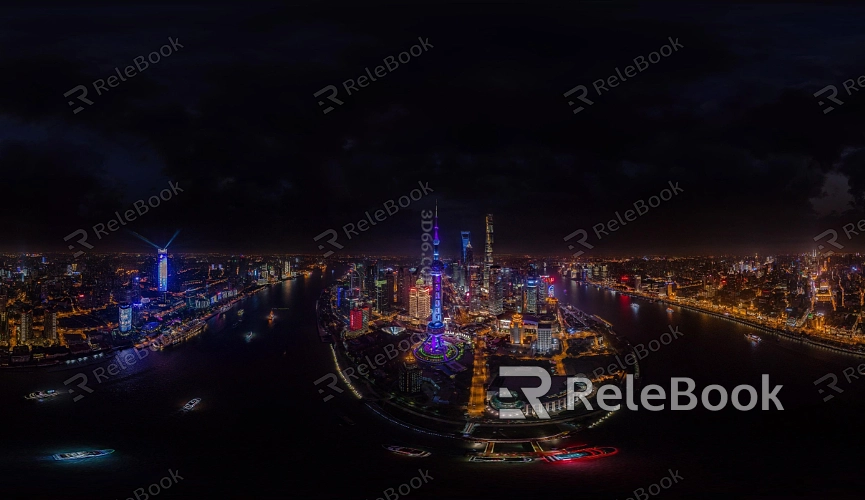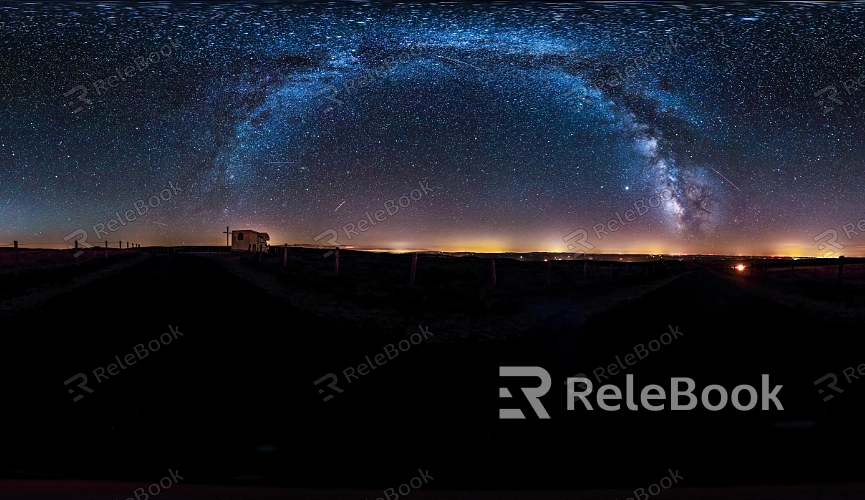What Are the Common Mistakes When Using HDR Textures for Night Environments?
HDR textures are essential tools for enhancing the realism of night scenes, especially in urban landscapes, indoor lighting, and virtual reality environments. Designers often utilize HDR textures to create captivating visual effects. However, during practical applications, they may encounter common mistakes that not only affect rendering quality but also waste time and resources. This article will explore the frequent pitfalls when using HDR textures in night environments and offer solutions to help designers improve their workflows.

Failing to Choose the Right HDR Image
Sometimes, designers use low-quality or inappropriate HDR images, which directly impacts the lighting effects in night scenes. Choosing an unsuitable image can result in color distortion or an inability to accurately capture the required lighting range.
Ignoring Dynamic Range
A common mistake when rendering high-contrast night scenes is overlooking the dynamic range of HDR textures. Designers should ensure that the HDR textures they use can capture a broad range of brightness to avoid losing detail.
Over-Relying on HDR Textures
While HDR textures can significantly enhance the realism of a scene, over-reliance on them may lead to unnatural appearances. Designers should balance the use of HDR textures with other textures and lighting techniques to create a more harmonious visual effect.
Improper Light Source Setup
When using HDR textures, the accuracy of light source setup is crucial. Incorrect placement or intensity of light sources can adversely affect the final outcome. Designers need to adjust light sources based on the characteristics of the HDR image to achieve optimal results.
Neglecting the Importance of Post-Processing
Some designers overlook the importance of post-processing after using HDR textures to enhance the final effect. Appropriate post-processing can further refine brightness, contrast, and color to ensure that the final output meets expectations.
Failing to Fully Utilize Software Features
Major 3D software, such as Blender, 3ds Max, and Maya, offer specific support for HDR textures. Not taking full advantage of these features can lead to subpar results. Designers should familiarize themselves with the settings and options within the software to maximize the effectiveness of HDR textures.

Lack of Testing and Adjustments
A frequent mistake when applying HDR textures in night scenes is the lack of testing and adjustments. Designers often use unmodified textures directly. Regular testing and adjusting of HDR textures in the scene can help identify potential issues and allow for timely corrections.
Not Considering Hardware Performance
In some cases, designers fail to account for the performance limitations of their hardware, leading to improper application of HDR textures. Choosing HDR textures that suit the performance capabilities of the hardware ensures a smoother rendering process and better results.
Lacking a Comprehensive Understanding of the Scene
Designers may lack a clear understanding of the overall scene when using HDR textures, resulting in uncoordinated effects. Understanding the overall ambiance and lighting needs of the scene can help designers select the appropriate HDR textures and adjust light settings effectively.
Failing to Communicate Within the Team
In team projects, a lack of communication among designers can lead to mistakes when using HDR textures. Regular discussions and feedback among team members can help ensure a shared understanding of HDR texture usage.
By recognizing these common mistakes, designers can avoid unnecessary errors when working with HDR textures, thereby enhancing both rendering quality and workflow efficiency. Proper selection and application of HDR textures not only improve the realism of night scenes but also optimize the overall workflow. If you're searching for high-quality HDR resources, 3D textures, or models, Relebook is an excellent choice. Downloading resources tailored to your projects will significantly enhance the quality of your models and virtual scenes.

